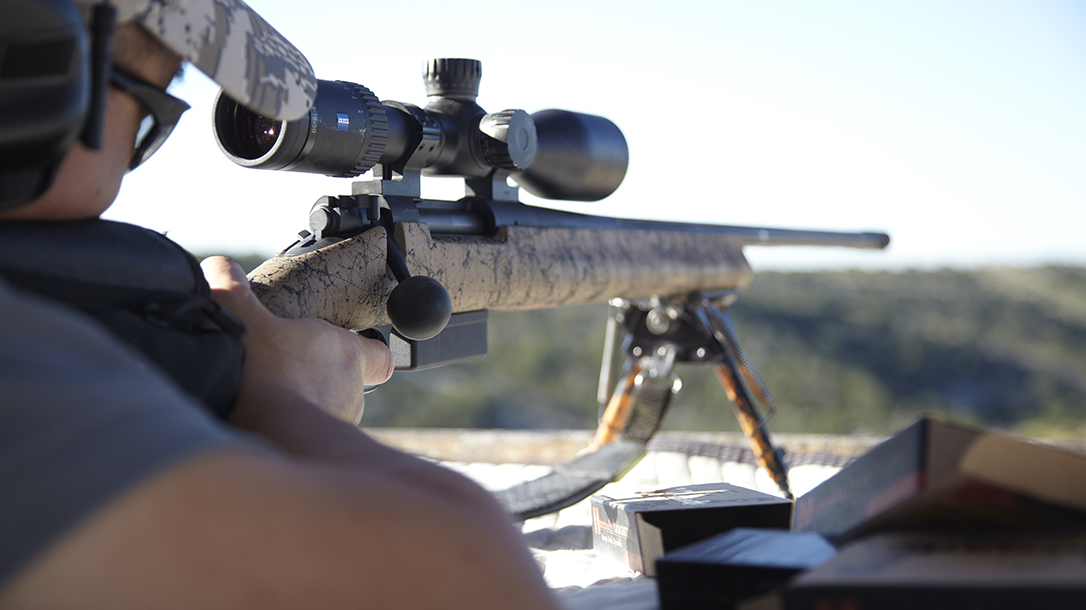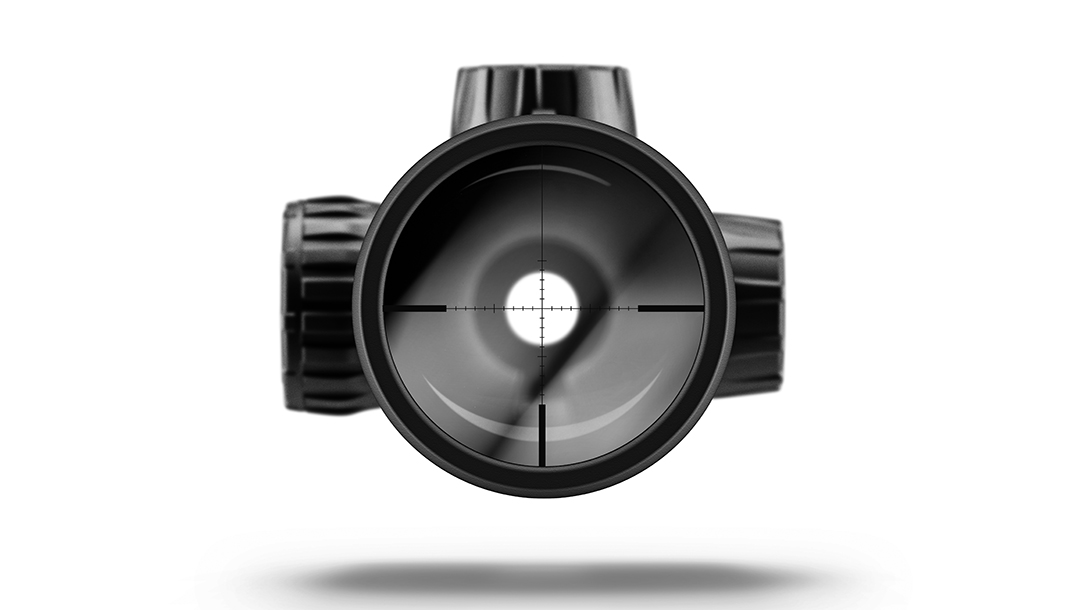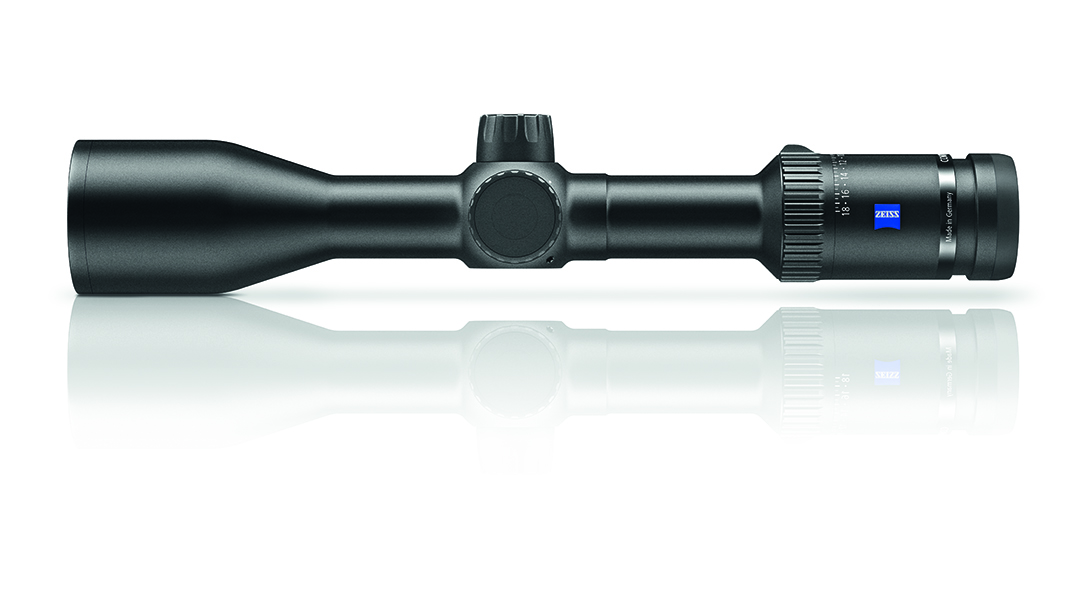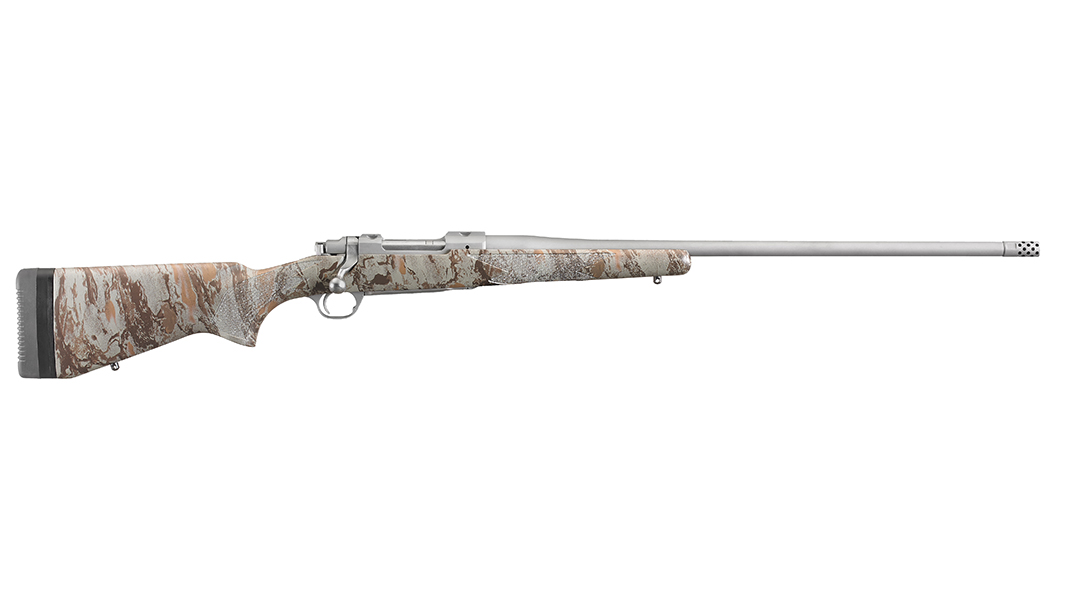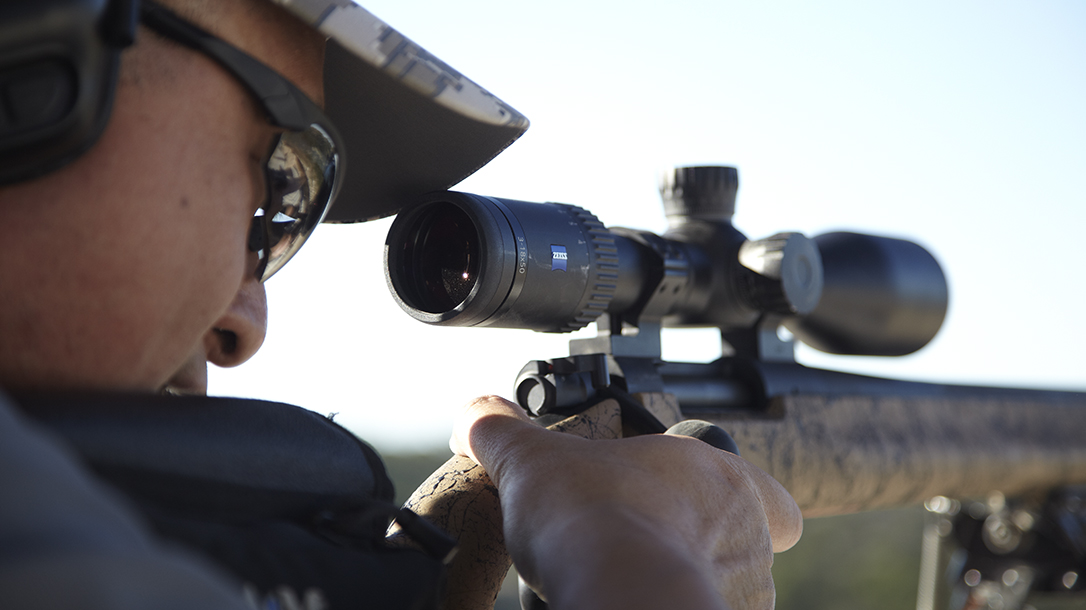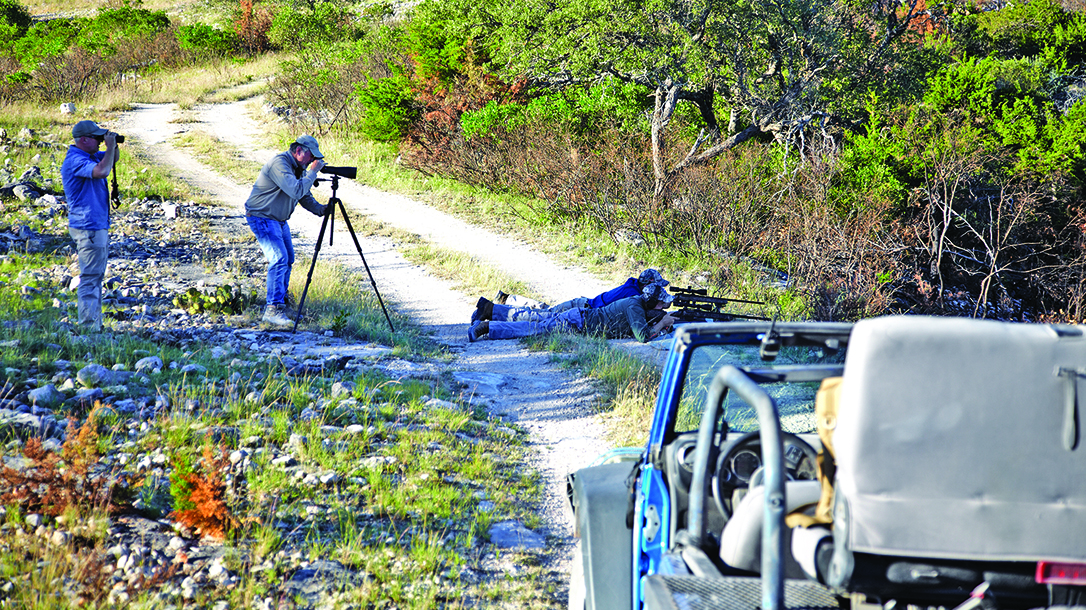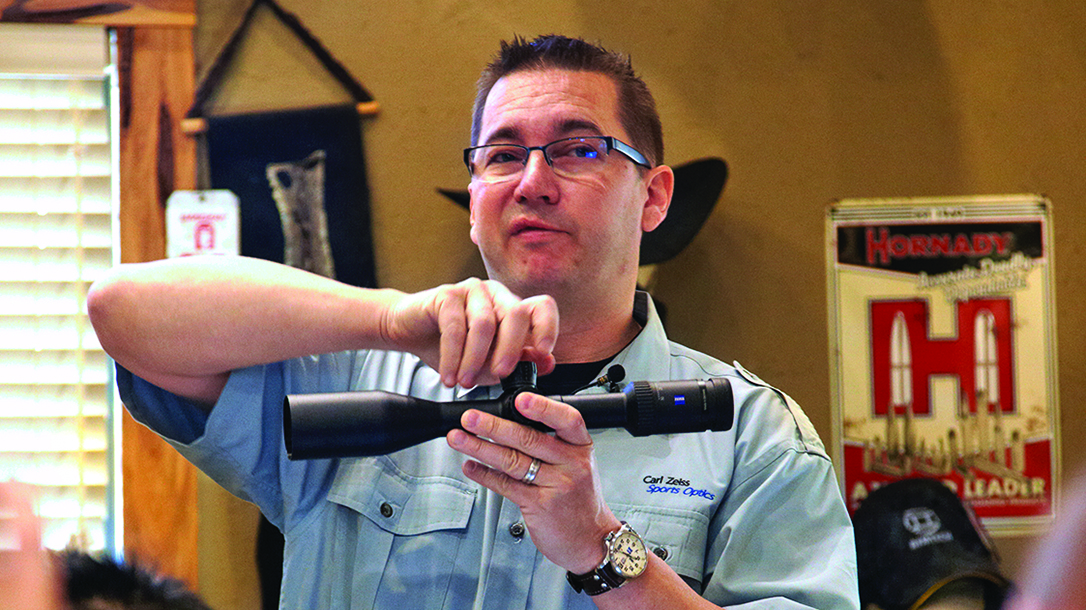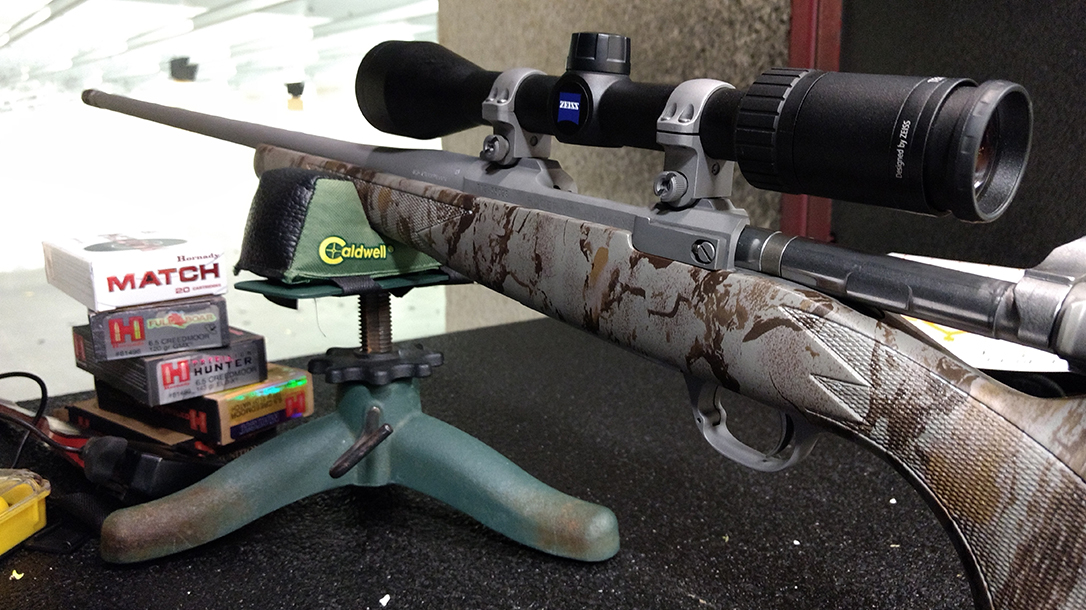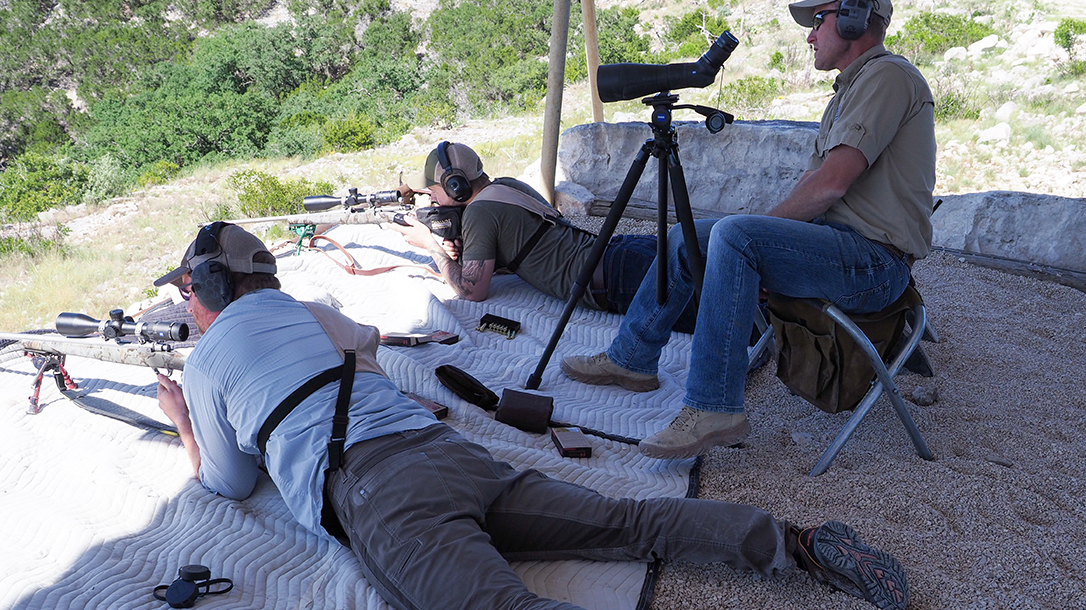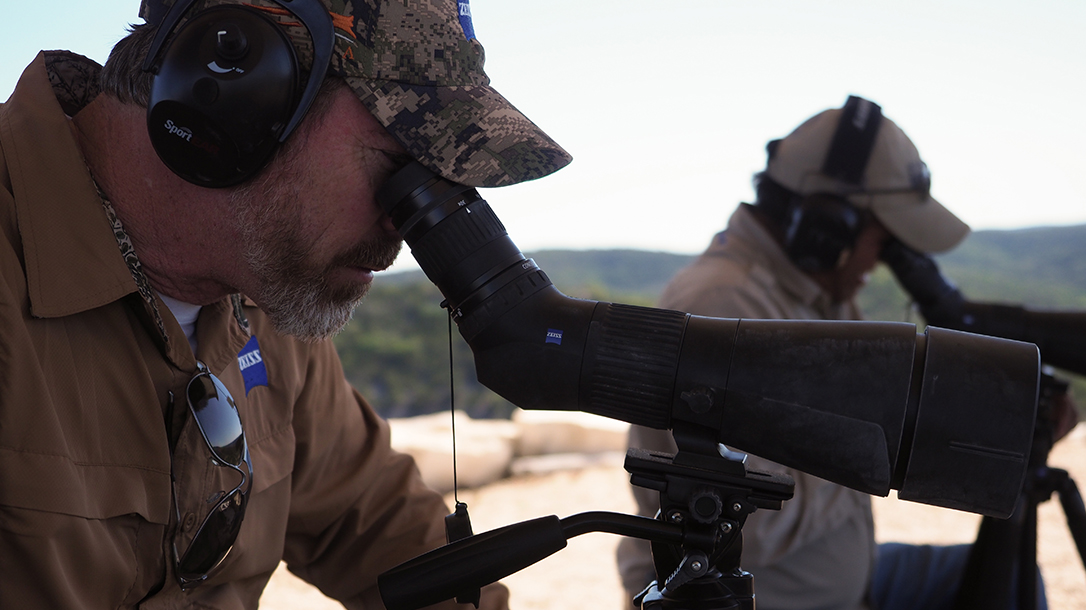One of the best ways to sell me a rifle is to let me whack a gong with it at 1,500 yards. I’m betting this sales tactic works on most folks. Little did I know that hitting the target at 1,500 yards wasn’t a sales pitch on a rifle, a scope or even ammunition at all, but a very effective lesson on shooting skills.
During a two-day long-range shooting school sponsored by Zeiss Optics known as the Sportsman’s All-Weather All-Terrain Marksmanship (SAAM) course taught at the FTW Ranch in southwestern Texas, I used a lot of different rifles to hit targets all the way out to 1,500 yards. Doing so sold me on a lot more than well-made rifles, optics and ammunition.
Advertisement — Continue Reading Below
Over the next few days I hit, and missed, quite a few steel plates at a lot of “Wow, that’s far” distances with a few different rifles ranging from off-the-shelf factory models like the Ruger Hawkeye FTW Hunter rifle, a lighter-than-I-thought-possible Proof Research rifle and a money-is-no-object H-S Precision rifle. They all worked when I did the right things, and they all failed, sometimes spectacularly, when I made mistakes. But let me save some Internet snipers some time: We never measured the rifles’ group sizes. Success was measured far more emphatically with a single ping from a hit. Failure was just as obvious with silence. It’s surprising how well instructors can hear nothing.
The Shooter
The course covered all the technical, ethical and even moral scenarios any hunter needs to be versed in if they wish to be effective in the field. The program goes over 24 chapters. It covers 110 pages over two days with some of the most intelligent and experienced hunters and long-range shooters on the planet. The program centered on this philosophy, which was posted throughout the facility, our sleeping quarters and repeated, often, by the instructors: “It’s the hunter’s job to kill an animal instantly with the first shot. Hunters owe it to the animal to accomplish that. If not 100-percent certain, get closer or don’t shoot.” On a personal note, I have always been confused as to why some hunters brag about how far away they’ve shot something when I always thought the whole point was to get as close as you could.
Throughout the course, the SAAM curriculum worked to help us understand, apply and perfect three shooting positions. The positions are prone, sitting and standing. Within all three positions, three simple rules were taught, applied and validated:
Advertisement — Continue Reading Below
1. The more skin on the ground, the better. Always get as low to the ground as possible.
2. Stability is the key to good shooting. Always get at least two points of contact to rest your weapon if possible.
3. Always be an uncompromising shooter. If you cannot hold the crosshairs within the inside 50 percent of the vital zone, get positioned where you can.
Advertisement — Continue Reading Below
Owning It
Ultimately, I was reminded that the shooter will always be the single greatest factor in a hit or miss. Of course, that was the point of the two-day course—for hunters to learn to rightfully own the success of a miss or hit more on their skills rather than on their gear. The curriculum, which makes a point of using a variety of equipment to negate the magic of hardware to a hunter’s success, stripped every shooter of any branding, crutches or misconceptions about the keys to long-range success. It was eye-opening.
Still, to prove to a lot of hunters that they are the greatest and final factor in a hit or miss, it helped to have some of the world’s greatest shooting instructors, equipment and ranges to dismiss any excuses. While the guns all have their subtle differences, they were all in the same caliber (6.5 Creedmoor) with the same optic (Zeiss’s new 5-30x50mm Conquest V6 riflescope) and ammunition (Hornady’s 140-grain ELD Match rounds).
The Glass
“We are thrilled to bring this high-performance Conquest V6 riflescope series to market,” said Zeiss’ Matthias Raft. “Carl Zeiss is the leader in hunting and shooting optics, and we are once again redefining the optics world with leading-edge products that will have a major impact on increasing our ever-growing market share. This new series of 30mm riflescope will be what all others are measured against.”
Advertisement — Continue Reading Below
Made in Germany, this particular scope offers 92-percent light transmission with fully multi-coated lenses. The matte black 30mm tube is made from hardcoat anodized aluminum. The turrets offer 0.25-MOA click adjustments, with 80 clicks per rotation. A variety of reticles are available, and they all have fine crosshairs for minimum target coverage.
To their credit, it wasn’t long before I forgot all about the brands I was using and focused on my techniques. After the course was over, however, the new Zeiss Conquest V6 left an impression on me. This was because its form and function were never an issue. In fact, now, and for the rest of my life, I’ll always expect a riflescope to do what that Zeiss V6 did up close, in brush, at elevation, in wind, in the heat, in low light and at ranges much farther than any shot I’ll ever take on a living beast.
Clear Vision
I always saw my targets clearly, with contrast. In addition, I could see and read wind at distances far greater than 1,000 yards. I could also separate similar colors from each other at even greater distances. I was always able to make positive and repeatable click adjustments without breaking out of my shooting stance. Every time I made a mistake with my shot, the rifle, scope and ammunition were reliable enough to reward me for proper execution with the very next shot.
Advertisement — Continue Reading Below
If you spend a little time researching the pedigree of any Zeiss optic, it becomes clear that making a hunting riflescope that can successfully and repeatedly put accurate shooters on target at 1,500 yards, and farther, is nothing more than an optical yawn for this global optics empire. I think Zeiss has always understood and pursued the engineering needed for mechanical success to go with its world-class optics.
The Ammo
Similar respect should be given to ammunition manufacturer and innovation leader Hornady. Long a fan of the classic Swedish 6.5x55mm, the opportunity to learn more about Hornady’s ballistic prodigy, the 6.5 Creedmoor, was quite welcomed. I wanted some clarity on the “magic” of the 6.5mm bullet and its legendary penetration.
I reached out to Neal Emery at Hornady for answers. “It’s definitely a 6.5mm thing—all sectional density,” Emery said. “A controlled-expansion bullet in .30 caliber weighing 140 grains would be rather short for its weight. A 140-grain controlled-expansion bullet of the same construction in 6.5mm is going to be longer. Therefore, it has a higher sectional density and will penetrate further.”
Advertisement — Continue Reading Below
Like I said, 6.5mm cartridges aren’t new, and among hunters at least, the 6.5x55mm is a legend. So, I asked Emery what enabled the 6.5 Creedmoor to move to the front of the 6.5mm line versus other popular and effective calibers like the .260 Remington and .264 Winchester Magnum.
“The Creedmoor has quite a few things going for it,” Emery said. “It is a true short-action cartridge that allows long, heavy bullets to be seated out. The .260 Remington requires the same long, heavy bullet to be seated further into the case or the use of a long action. The 6.5x55mm is even longer. The Creedmoor also benefits from close adherence to both the chamber design specs and the ammunition specs—everyone essentially makes it the same.”
Hornady’s ELD Bullet
Finally, having been educated and exposed to Hornady’s new ELD polymer bullet design during the two-day course, I wanted to know just how good of a bullet this was for hunting on its own merit, and even versus non-polymer designs. So, I asked Emery if hunters and target shooters choose it over non-polymer tipped-bullets, too, or just other polymer bullets? Why beat around the bush, right?
Advertisement — Continue Reading Below
Emery didn’t flinch. “Both,” he said. “In both bullets, it creates the perfect meplat (point). They are the same, time after time. Manufacturing BTHP bullets with the exact same tip geometry doesn’t happen. For the ELD Match bullets, it’s all about consistency and maximizing the ballistic potential. On the hunting side (ELD-X), the tip is quite important for terminal effect. Upon impact, the tip gets pushed into the hollow cavity in the nose, forcing expansion. BTHP designs are dependent on what they hit to dictate how or if the bullet expands. Tipped bullets are far more consistent in their expansion.”
The Rifle
Now, back to the guns. All the rifles I shot were impressive. The H-S Precision rifle fed so smoothly that I swore the rounds were coated in Teflon. After the course was over, however, I ordered the Ruger Hawkeye FTW Hunter rifle in 6.5 Creedmoor for myself. This was because it shot steel plate for steel plate with the fancier smoke poles, and quite frankly, I could afford it.
Advertisement — Continue Reading Below
My personal Ruger Hawkeye FTW Hunter rifle in 6.5 Creedmoor wears a Zeiss Terra 4-12x50mm optic, again because I can afford it. It also gets fed a steady diet of Hornady ammunition because Hornady has never failed me at the range or in the field.
After I got back to Virginia, I ran my Ruger Hawkeye FTW Hunter rifle through a short review. The gun handled well, and the 24-inch barrel, with its muzzle brake, kept the hunting rifle calm, on target and pleasant to shoot all day long. I’m sure many of you may think a brake on a 6.5 Creedmoor is overkill. But let me tell you, brakes do a lot more than tame the kick. They keep the muzzle down and have a significant impact on your ability to keep your rifle and its scope on target as you fire, work the action and regain your sight picture for a follow-up shot.
After The FTW Ranch SAAM Course
After SAAM, I want a rifle that has enough energy to hit my prey like the hammer of Thor but punch my shoulder like a bunny. The bolt feeding was a little rough compared to some other guns I’ve used out of the box. But with a little wear, practice and use, the bolt runs slicker than whale snot. Cosmetically, the rifle screams, “Take me hunting in the rain, snow, dirt and dust!” It’s all business, designed from the ground up as a workhorse purposely built to hunt hard and reward its practiced user with clean, accurate shooting. I can adjust the length of pull, keep the brake on or take it off, and Ruger’s scope ring design keeps optics rock-solid steady.
In short, I spent the entire class realizing and thus being reminded of just how flawed we humans can be compared to world-class rifles, optics and ammunition. At FTW Ranch, “humble pie” was always on the menu, and with every bite my shooting got better.
Ruger Hawkeye FTW Hunter Specs
| Caliber: 6.5 Creedmoor |
| Barrel: 24 inches |
| OA Length: 43.25-44.75 inches |
| Weight: 7.6 pounds (empty) |
| Stock: Natural Gear camo laminate |
| Sights: None |
| Action: Bolt |
| Finish: Matte stainless |
| Capacity: 4+1 |
| MSRP: $1,269 |
Ruger Hawkeye FTW Hunter Performance
| Load | Velocity | Accuracy |
|---|---|---|
| Hornady 120 ELD Match | 2,938 | 0.81 |
| Hornady 120 Full Boar GMX | 2,943 | 1.45 |
| Hornady American Gunner BTHP | 2,708 | 0.41 |
| Hornady 140 ELD Match | 2,782 | 0.79 |
| Hornady 143 ELD-X Precision Hunter | 2,740 | 0.62 |
| Hornady 147 ELD Match | 2,714 | 1.41 |
*Bullet weight measured in grains, velocity in fps by chronograph and accuracy in inches for three 5-shot groups at 100 yards.
For More Information
FTW Ranch
ftwsaam.com
Hornady
hornady.com
Ruger
ruger.com
Zeiss Sports Optics
zeiss.com
This article was originally published in the February/March 2018 issue of “Tactical Weapons.” To order a copy and subscribe, visit outdoorgroupstore.com.
